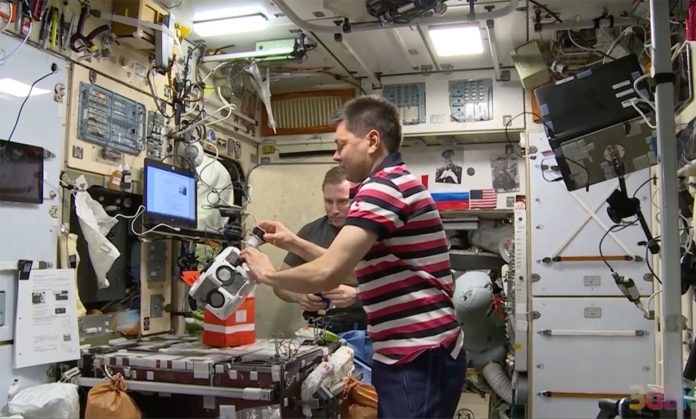Using the power of magnetism, an astronaut aboard the International Space Station (ISS) has successfully assembled human cartilage using a magnetic levitation bioassembly device.
The device enables clusters of human cells to assemble into tissue structures without requiring a physical scaffold.
Bioprinters that can produce human tissue already exist on Earth, but they rely on gravity and scaffolds to bring cartilage cells together. Magnetic levitation, however, works just fine in orbit. The method is used to counteract the effects of gravitational acceleration and any other accelerations—and also hold objects in place in the absence of gravity.
In 2015, Utkan Demirci and Naside Gozde Durmus at Stanford demonstrated that living cells, as well, could be controlled when placed in a paramagnetic fluid medium. This includes placing two strong, opposing off-the-shelf magnets so near one another that a high gradient force is generated. A microfluidic channel comprising of the diamagnetic cells and the paramagnetic liquid is placed between the magnets.
The difference between the magnetic susceptibility of the diamagnetic cells and the paramagnetic fluid, multiplied by the gradient of the magnetic field, is sufficient to balance the weight of the cell, accordingly levitating it. At the point when groups of cells are subjected to these conditions, they move to a similar spot in the medium, amassing into 3D tissue structures and organoids.
The idea was later expended by Vladislav Parfenov at the Laboratory for Biotechnological Research, CD Bioprinting Solutions, in Moscow, and his colleagues. They built a device that enables the assembly of groups of cells, called spheroids, into three-dimensional structures. But that device ended up in space.
Then, in November 2018, the rocket that was taking it to the ISS blew up. Parfenov and the team built another bioassembler and got it onto the next rocket out of Kazakhstan that December.
A day after the device’s arrival on the Russian segment of the ISS, cosmonaut Oleg Kononenko performed the experiment, which involved injecting the paramagnetic medium into the cuvettes with the cartilage cells (derived from human knees and hips), cooling them, putting them into the magnetic bioassembler, and pressing go.
Demirci said, “This was the first time that cells and organoids have been assembled and biofabricated in space. People have been doing biological experiments and culturing cells in space, but being able to assemble these building blocks into more complex structures using a biomanufacturing tool—that’s a first.”
“Such experiments could also aid research on cell interactions that benefit life here on Earth. In the absence of gravity, cells, and proteins behave very differently. Understanding these interactions without gravitational noise could reveal new information about how drugs and cells interact.”
Journal Reference:
- Vladislav A. Parfenov et al. Magnetic levitational bioassembly of 3D tissue construct in space. DOI: 10.1126/sciadv.aba4174
